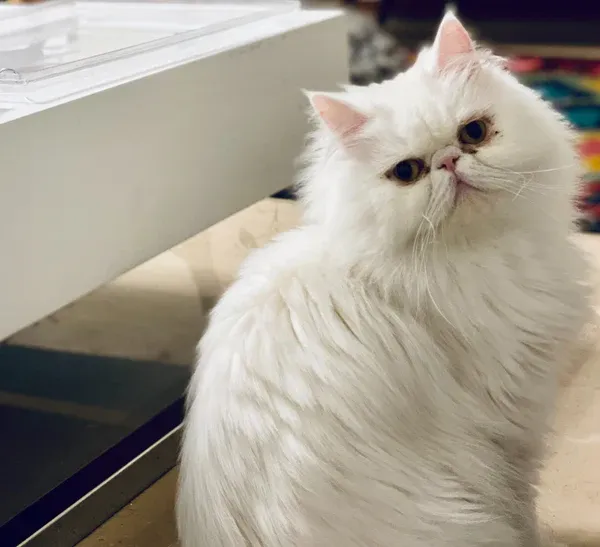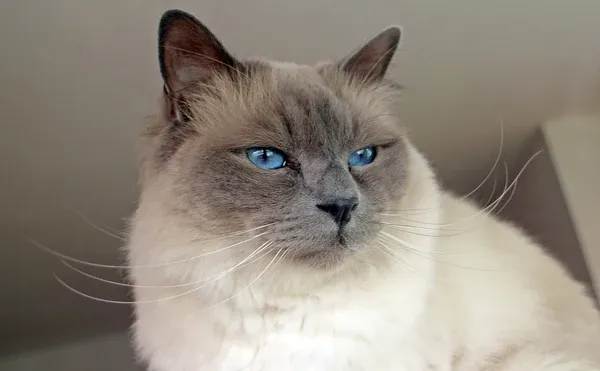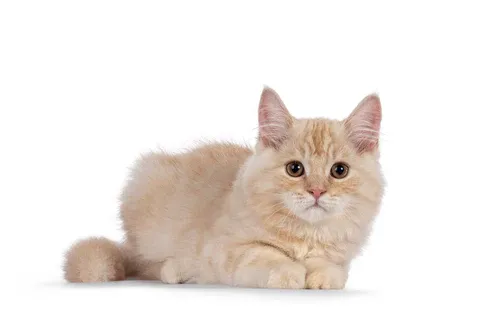The irresistible charm of cats often draws people in, but for those with allergies, selecting the right breed matters greatly. If you’re sensitive to cats, knowing the Worst Cat Breeds for allergies can prevent misery from sneezing, itchy eyes, and other symptoms. These breeds tend to exacerbate reactions due to higher levels of Fel d 1, the primary cat allergen found in saliva, skin, and urine. In this guide, we’ll break down the science behind cat allergies and highlight the top offenders, helping allergy sufferers make smarter pet choices.
 close up of Persian Cat
close up of Persian Cat
What Causes Cat Allergies?
Cat allergies stem from Fel d 1 protein, not fur itself, as many believe. This allergen spreads through saliva during grooming, sticking to fur and becoming airborne via shedding, skin flakes, or dander. Studies confirm Fel d 1’s role, with airborne particles triggering reactions in sensitive individuals.
Three key factors amplify a cat’s allergenic potential. First, longer fur traps more Fel d 1, releasing it during shedding—common in many worst cat breeds for allergies. Second, frequent grooming deposits extra protein onto fur, while heavy shedders disperse it widely. Third, some breeds produce higher Fel d 1 levels naturally, though variation exists within breeds. Research from the National Institutes of Health supports these traits, noting breeds like Himalayans produce more than others, such as Siberians (source; source).
 Persian cat looking at screen
Persian cat looking at screen
Top 8 Worst Cat Breeds for Allergies
Persian Cats
Persian cats top the list of worst cat breeds for allergies due to their profuse shedding. They “blow” their coat twice yearly, dumping massive Fel d 1-laden fur at once. Their dense, long fur also traps allergens effectively during daily grooming routines. Allergy sufferers often report severe symptoms around Persians, making frequent deep cleaning essential.
 Oriental longhair cat
Oriental longhair cat
Oriental Longhair Cats
Oriental Longhairs feature luxurious long fur that excels at capturing Fel d 1 from saliva. These cats groom obsessively, embedding more protein into their coat before shedding it airborne. Combined with their silky texture, this leads to heightened allergen exposure in homes. Owners with allergies frequently need extra ventilation and vacuuming.
 British longhair cat
British longhair cat
British Longhair Cats
With plush, long coats thicker than many peers, British Longhairs retain substantial Fel d 1. They shed regularly, dispersing trapped allergens throughout living spaces. This breed’s grooming habits further boost protein transfer to fur. For severe allergy cases, their presence can overwhelm standard mitigation efforts.
 Birman cat
Birman cat
Birman Cats
Birman cats have semi-long, silky fur ideal for trapping Fel d 1 despite moderate shedding rates. When they do shed, the release of accumulated allergens spikes exposure risks. Their grooming frequency ensures steady protein buildup. Allergy-prone individuals may experience prolonged symptoms without diligent fur management.
 Himalayan cat
Himalayan cat
Himalayan Cats
Himalayans produce elevated Fel d 1 levels genetically, on top of heavy shedding from their long, dense coats. This dual threat positions them firmly among the worst cat breeds for allergies. Grooming spreads the protein widely, intensifying reactions. Veterinary experts recommend avoidance for highly sensitive people.
 Cymric cat
Cymric cat
Cymric Cats
Cymric cats, tailless variants of Manx, boast extra-long coats that hoard Fel d 1 efficiently. Moderate shedding still releases enough to bother allergy sufferers. Their unique fur structure prolongs allergen persistence on surfaces. Regular bathing helps, but baseline risks remain high.
 Maine coon
Maine coon
Maine Coon Cats
Maine Coons shed frequently despite medium-length fur, amplified by their large size for greater overall dander output. Grooming routines coat their fur thoroughly with Fel d 1. This combination heightens airborne allergens in multi-room homes. Their playful nature stirs up more particles during activity.
 Scottish fold
Scottish fold
Scottish Fold Cats
Scottish Folds sport exceptionally thick coats that mimic long-haired breeds in Fel d 1 retention. Average shedding frequency suffices to distribute allergens steadily. The plush density traps saliva proteins deeply, releasing them gradually. Allergy management demands consistent brushing and air filtration.
Are Tabby Cats Hypoallergenic?
Tabby cats aren’t hypoallergenic—tabby is a pattern, not a breed. Tabbies appear across breeds, including several worst cat breeds for allergies like Persians or Maine Coons. Allergen levels depend on the underlying genetics and traits, not stripes.
Managing Cat Allergies Beyond Breed Selection
Even with challenging breeds, strategies can reduce Fel d 1 impact. Brush cats weekly outdoors to capture shed fur early. HEPA air purifiers trap airborne particles effectively, complementing daily vacuuming of fabrics and floors. Allergen-neutralizing sprays target Fel d 1 on surfaces proactively.
Specialized foods like Purina LiveClear lower production in some cats, backed by clinical trials. Consult veterinarians for personalized plans, including antihistamines. For severe cases, professional allergy testing guides optimal meds. These steps, drawn from expert guidelines, help many coexist happily with cats.
In summary, steering clear of the worst cat breeds for allergies like Persians and Himalayans preserves comfort. Prioritize low-shedders and proactive care for joyful pet ownership. Always vet advice from sources like the American Veterinary Medical Association. Explore more cat care tips on our site for allergy-friendly living!
